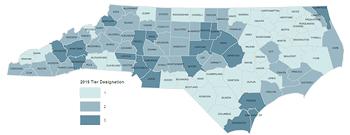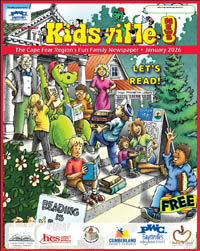 News arrived last week that Cumberland County has slipped into Tier 1 status in North Carolina’s rankings of counties’ economic health. Cumberland joins 39 other counties as among our state’s most economically distressed, sometimes referred to as “low wealth” — the 20th most distressed to be exact. Joining us in the lowest economic designation are our neighbors Hoke, Robeson, Scotland, Sampson, Duplin and Richmond, as well as others scattered in mostly rural areas across the state.
News arrived last week that Cumberland County has slipped into Tier 1 status in North Carolina’s rankings of counties’ economic health. Cumberland joins 39 other counties as among our state’s most economically distressed, sometimes referred to as “low wealth” — the 20th most distressed to be exact. Joining us in the lowest economic designation are our neighbors Hoke, Robeson, Scotland, Sampson, Duplin and Richmond, as well as others scattered in mostly rural areas across the state.
State and local officials tried to dress up the designation by saying it came because the state adjusted the method for calculating rankings. They correctly promoted that Tier 1 status makes Cumberland eligible for more state grants and individual companies eligible for additional incentives for bringing new jobs. In other words, Tier 1 designations come with perks.
Make no mistake, though. This is not good news.
Tier 1 is a marker of economic distress, and Cumberland County qualifies. It is the only county among North Carolina’s 10 most populous to have Tier 1 status. The nine other most populous counties hold Tier 2 or 3 designations, the more and the most economically blessed. One can find statistics to support most any assertion, and here are a few from the North Carolina Budget and Tax Center. More than 51 percent of local renters cannot afford their rent. More than 41 percent of residents are low income, and more than 12 percent have no health insurance. There are plenty more statistics, some negative and some positive.
All of this is part of a much larger picture of North
Carolina and many other states — a profound and growing rural-urban divide. North Carolina’s booming urban areas, notably Charlotte and the Triangle, have little in common with our rural areas. They have educated and well-paid workforces, access to technology, enviable school systems, world-class health care and, not surprisingly, rapidly growing populations.
Rural areas, on the other hand, struggle to provide education, lack wide access to technology, see hospitals closing, and watch their young people move to urban areas for jobs and city amenities. A shorthand way of expressing this is that in a state of 100 counties, roughly 85 percent of the people live in 15 counties, and 15 percent of the people live in 85 counties. That said, our rural population is still larger than that of any other state except Texas.
Cumberland is a county with a foot in each camp. On the one hand, we are populous, with cultural influences from many nations. Our economy has historically been somewhat insulated from downturns by the steady military presence. But we are less educated than our other urban sisters and brothers and have lower incomes. Our population is transient, affecting many areas of community life, including education.
Much angst exists about the rural/urban divide, with conversations ongoing in both public and private sectors. How do we nurture the prosperity of our urban areas and handle the issues stemming from rapid growth but at the same time help our rural areas access the technology their residents require for both education and business?
Cumberland County’s Tier 1 ranking is disheartening, but the good news is that with our urban center, we have more to work with than do many other North Carolina counties.
There are excellent schools within our public system, and Fayetteville Technical Community College offers education and training at affordable rates. The military brings expertise in many areas, some of which can be translated into the private sector. We are proof of not only the rural-urban divide but of the rural-urban interconnection. Both exist within our county’s boundaries and can help each other through partnerships of all sorts, including agriculture and technology, which are increasingly intertwined. Think farm-to-table and ways to make that possible in both stores and restaurants.
We must also reach deep within our community for innovative and thoughtful leaders, people who understand the divide and are willing to experiment with bridging it. We must recognize that leaders come from all age groups and ranges of our community.
As North Carolina state Sen. Erica Smith, who represents eight rural, mostly struggling counties, told a recent panel on the “two North Carolinas,” “We are only as strong as our weakest community.”

 How to resolve AdBlock issue?
How to resolve AdBlock issue? 








